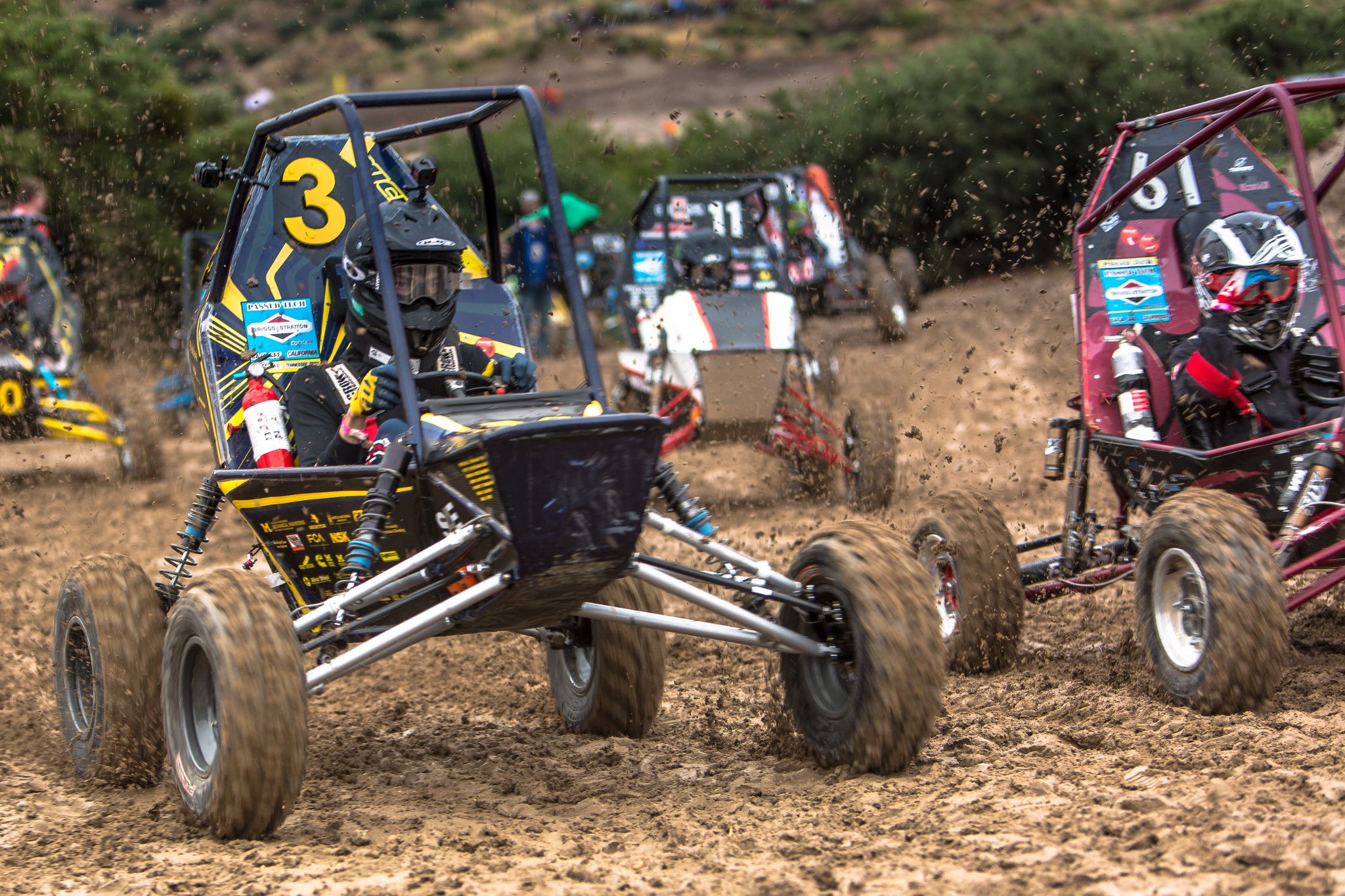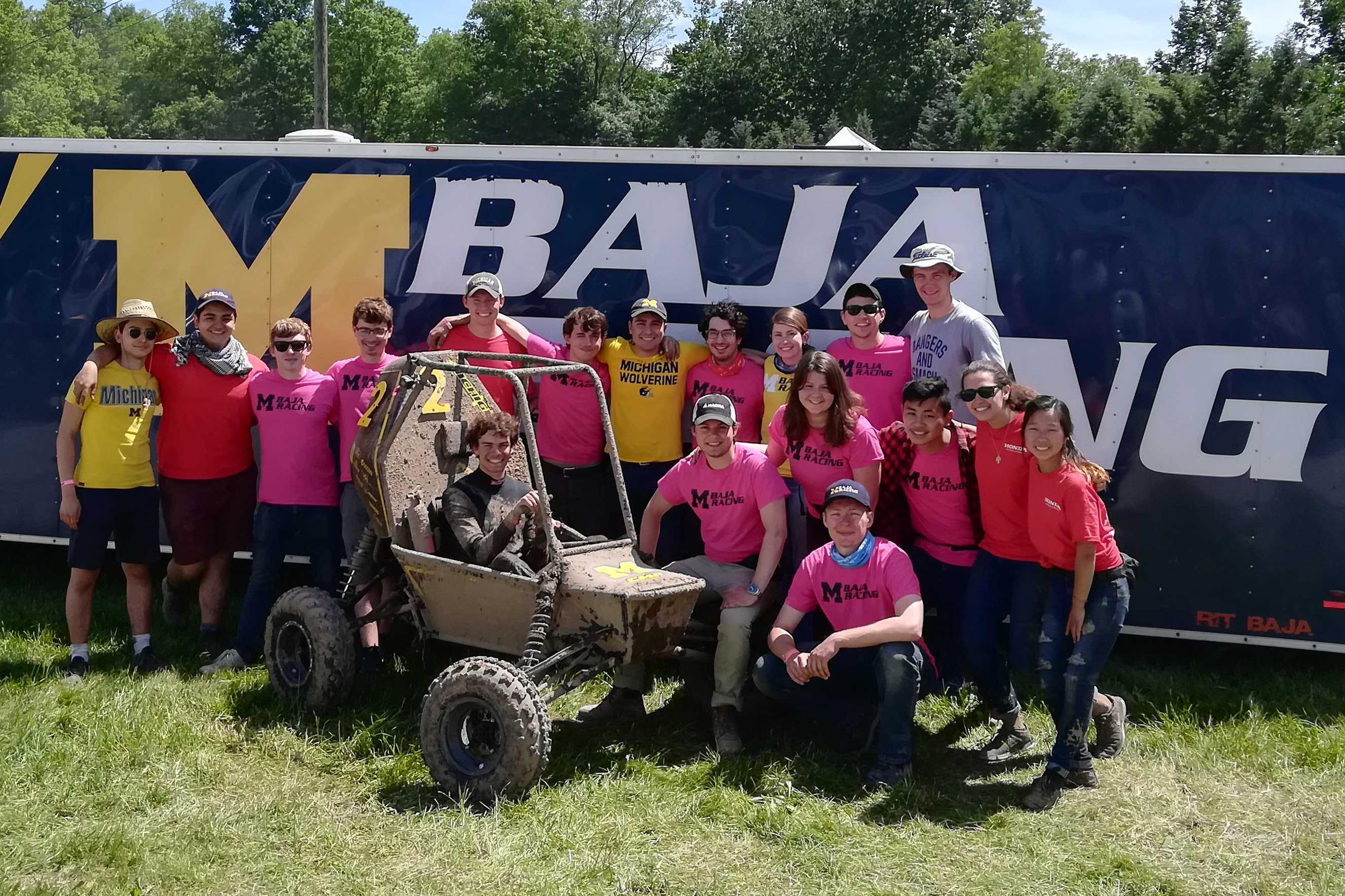Baja Racing breaks records while leaving the competition in the dust
Breaking the all-time record for highest cumulative season score, the team took home the 1st Place Mike Schmidt Memorial Iron Team Award.

 Enlarge
Enlarge
It is not a sport for the faint of heart.
Baja Racing is an off-road motocross race that tests the limits of your endurance and skill as a driver. Every year, collegiate teams from around the world build their own Baja racecar, which then compete in three competitions where they are judged on multiple criteria from design presentations and cost audits to hardcore suspension tests and a 4-hour long endurance race. The top team that competes in all three competitions is awarded the Mike Schmidt Memorial Iron Team Award, which is equivalent to a world champion title.
This year, the Michigan Baja Racing team – which features two electrical engineering students – not only took 1stplace for the Mike Schmidt Memorial Iron Team Award, but they did so while breaking the all-time record for cumulative high score since the award began in 2001.
Michigan Baja Racing scored above 900 points at all three competitions. They took overall 1stplace at both Baja SAE Rochester and Baja SAE California, and they took 2ndplace overall at Baja SAE Tennessee Tech. The team placed 1st in maneuverability at all three competitions and 1st in all four dynamic events at the California competition. They also, quite literally, left the competition in the dust at the Rochester competition, placing 1st in the endurance event and finishing with a two-lap lead.
The team also adapted well to unforeseen challenges that always pop up during competition. They managed to finish fourth in the endurance event at the California competition despite a heavy downpour and their car having gained over 100 lbs of mud during the race.

 Enlarge
Enlarge
Max Baer, a junior in EE, joined the team last year and was particularly excited about the opportunities for all team members to contribute to the design and construction of the racecar.
“On Baja, all the upperclassmen encourage and support underclassman to show up and have a major role in manufacturing parts that go directly onto the car that races at competition or helping them run tests, FEA, or develop CAD that are vital in the design of the vehicles,” Baer says. “No matter your class standing, knowledge of cars, or ability to turn a wrench, there is always meaningful work to be done on our cars.”
One of Baer’s main projects this past year was tuning the Continuously Variable Transmission (CVT). According to Baer, tuning the CVT isn’t a major focus for many teams, for neglecting it often results in only small losses in speed or torque. However, it can also result in major disasters such as the CVT’s belt or sheathes setting themselves on fire, which, according to Baer, is “very cool to see in person, not cool to try to fix.”
Baer adds:
Tuning a CVT can be a very tedious task as it takes several very small changes to both the primary and secondary sheathes of the CVT, namely changing pretensions of springs, replacing springs with other springs that are either stiffer or easier to compress, or add small weights (on the scale of 1 or 2 grams) to one of the sheathes to increase its rotational inertia.
This is a process that can take dozens of hours to squeeze every last ounce of performance out of a transmission, but it can be simplified by add some “brains” in the equation. An ECVT (electronically controlled continuously variable transmission) isn’t reliant on as many mechanical parts for the transmission to do its job, which decreases the tuning time from a mechanical CVT, which takes hours, to simply changing a few numbers around in a control model/script to achieve the same effect.
Where a mechanical CVT relies on the rules of physics and equations that most of us learning in an introductory physics or mechanical engineering course, and ECVT relies on real-time inputs from sensors to gather data about the state of the drivetrain (throttle request from driver, rotational speed of the engine, etc.) and uses logic to find the optimal state for the transmission.
Baer’s work on the CVT translated to small increases in the top speed and it kept the engine at the optimal RPM for a little bit longer.
Baer and the team are already preparing for the next season, and the team is committed to recruiting students from across the College of Engineering, even those with little to no experience.
“Bringing people in who are willing to learn is what building teams is all about,” Baer says.

 Enlarge
Enlarge
 MENU
MENU 
